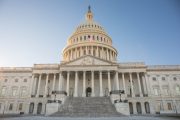
When TARP Inspector General Neil Barofsky criticized the Home Affordable Modification Program (HAMP) as being ineffective, he blamed the Treasury Department for not setting clearer goals for that part of the Troubled Asset Relief Program (TARP).
Only 390,000 homeowners “have seen their mortgage terms permanently modified since the $50 billion program was announced in March 2009. That is a small fraction of the three to four million borrowers who were supposed to receive assistance under the program.”
Barofsky testified that “one of the program’s greatest failures” was the absence of clear goals for the program. Elizabeth Warren, chairwoman of the Congressional Oversight Panel, and Richard Hillman from the Government Accountability Office both agreed. Hillman said the program “made limited progress in preserving homeownership.” Warren added: “Fifteen months into this program, for every one family that appears to have made it to a permanent modification that’s likely to [keep] that family in that home, 10 more have been moved out through foreclosure.”
That all of this posturing was just a deliberate distraction became clear, however, when Barofsky pointed out that the entire federal government’s support for the mortgage industry has grown to more than $3.7 trillion, which included government promises and guarantees not only to the Federal National Mortgage Association (Fannie Mae) and to the Federal Home Loan Mortgage Association (Freddie Mac), but also to the Federal Housing Administration (FHA), the Government National Mortgage Association (Ginny Mae), the Veterans Administration (VA), and the Federal Insurance Deposit Insurance Corporation (FDIC). Barofsky said that the estimated $3.7 trillion cost to the taxpayers increased by $700 billion in just one year, “the equivalent of a fully deployed TARP program [all by itself].” Furthermore, these increases more than offset the much-ballyhooed “paybacks” from some banks that have repaid some of their TARP loans. He added that “Federal support for the nation’s financial system … increased … largely without congressional action.”
Darrell Issa (R-Calif.) was outraged: “The fact that the Obama administration is treating TARP like its own personal slush-fund is beyond egregious and a complete betrayal of what the American people were told … when their tax dollars were used to bail out Wall Street.”
Originally, TARP was designed to buy up mortgage-backed securities whose value had dropped so sharply that there were no buyers, in order to keep banks and other financial institutions holding those securities from collapsing. The first iteration failed because of overwhelmingly negative public reaction.
After some back-room arm-twisting, the second iteration was passed by Congress and was signed into law by President Bush in October, 2008. Henry Paulson, one of the original architects of the TARP bail-out, immediately decided not buy those “toxic” assets after all, but instead injected nearly $350 billion into large insider banks by purchasing those banks’ shares. According to the New York Times, nine of the largest banks were given outright $25 billion each. Much of that money was then used by those insider banks to purchase weaker banks, and to bolster their reserves in the event of further declines in the economy. Two of those monster banks, Citigroup and the Bank of America, each received additional capital insertions in order to stay afloat.
Continued use of TARP funds as a “slush-fund” further outraged the public, which began to vote TARP supporters out of office. Daniel Mitchell, writing for the Cato Institute, called those removed from office “TARP martyrs” because of their continued support of such government intervention and self-dealing in the face of increasing political resistance. Senator Bob Bennett (Utah) and Representative Bob Inglis (South Carolina) lost their own Republican primaries, and the list of such martyrs “will become much larger this November as voters have additional opportunities to express their unhappiness about the massive transfer of wealth from taxpayers to poorly run by politically connected financial institutions.” Says Mitchell:
Beltway insiders and members of the political establishment are mourning these developments, asserting that the TARP martyrs are noble and courageous officials who did the right thing despite the risk to their careers. The obvious implication is that ordinary voters are a bunch of yokels who did not
understand the steps that were needed to rescue the financial system and the economy from collapse….
TARP was also a terrible piece of legislation because it meant that politicians, rather than market forces, determined which companies survived. It also was a moral abomination. Government-coerced redistribution is never a good idea, but the worst type of welfare is when poor people are forced to subsidize rich people. That’s a good description of TARP, and the politicians who voted for it should breathe a sigh of relief that they are getting bounced out of office instead of [being] tarred and feathered.

